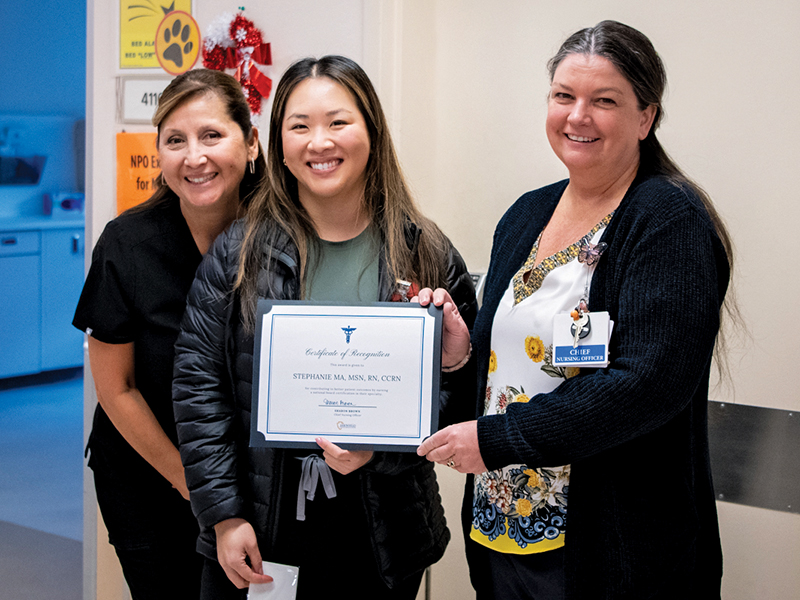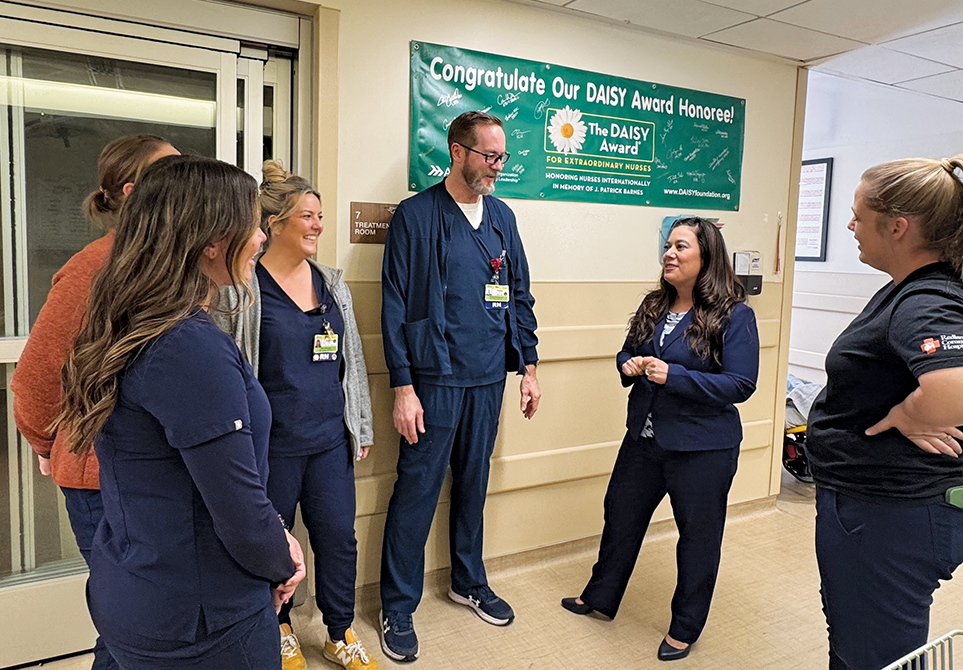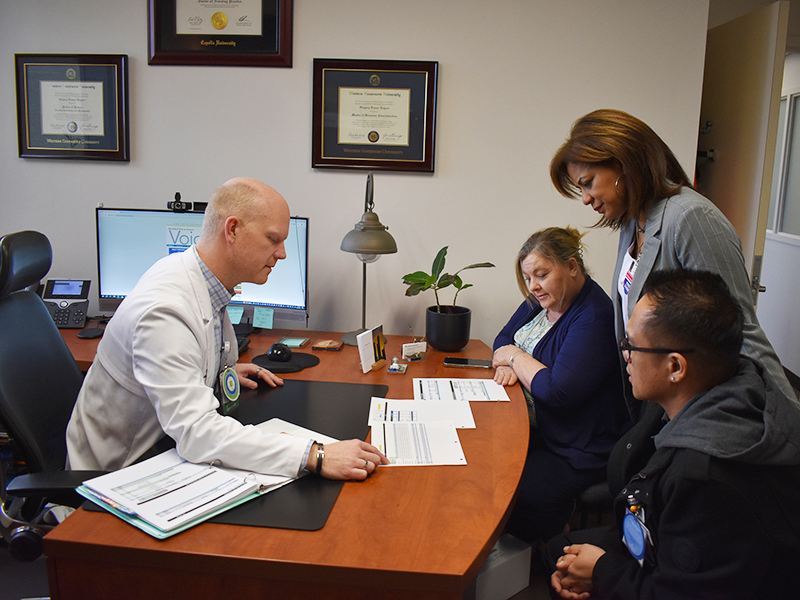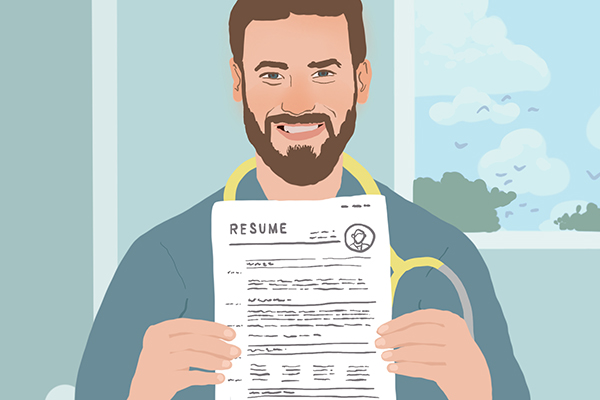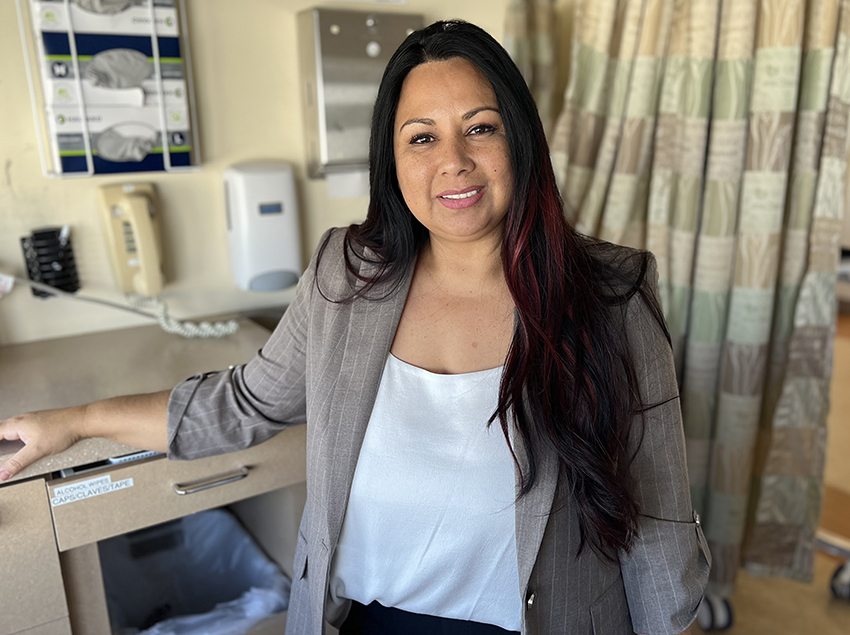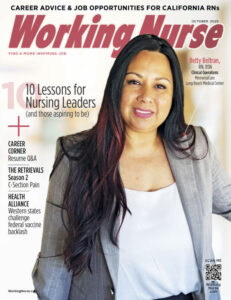CNO Roundtable 2025
Q8: Staffing Strategies
What is your biggest concern regarding nurse recruitment and retention? How are you tackling that challenge?
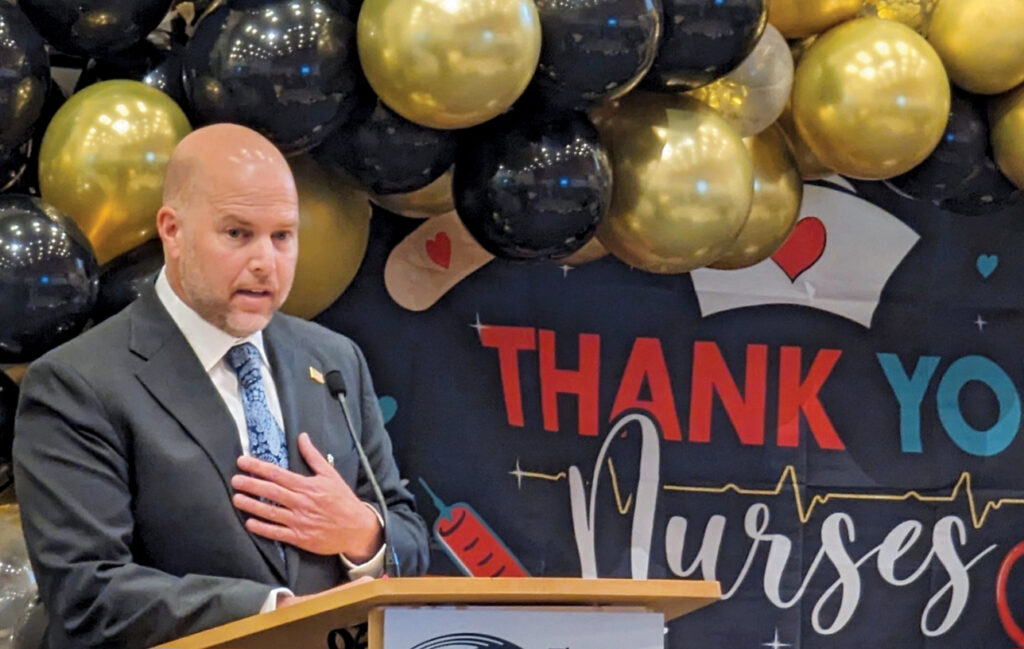
Angela Brady, San Gorgonio Memorial Hospital
The biggest challenge is burnout. I’m addressing this by fostering a more collaborative work environment, including floating staff across departments to help balance workloads.
Annabelle Duschane Braun, Orange Coast Medical Center
The biggest challenge is making team members feel valued and like they have a future with us. Creating an environment where nurses’ careers can grow and they feel supported makes all the difference.
Sharon Brown, Arrowhead Regional Medical Center (above, right)
It’s challenging to navigate the changes in workplace culture as newer generations of nurses enter the workforce. This requires organizations to be adaptable and proactive in creating environments where all nurses feel valued.
Brandi Cassingham, Saddleback Medical Center
Retaining staff on the night shift is tough. In the past, night shift was part of the process, but younger generations don’t feel like they can raise a family working nights. It’s completely understandable, and it’s been especially challenging to find a solution.
Karen Grimley, UCLA Health
One of the biggest challenges is ensuring that there are competent staff to cover vacancies, turnover, and nonproductive time. Something I’ve found extremely valuable has been expanding our resource team of nurses who are competent in several specialties and always ready to jump in.
Derrek Hidalgo, California Rehabilitation Institute
The biggest challenge is that many staff are prioritizing family and life experience outside their jobs. Just as other industries are questioning the 40-hour workweek, it may be time to really look at whether there are alternatives to the usual 36-hour nursing week.
Ceonne Houston-Raasikh, Keck Hospital of USC
Organizations must be able to demonstrate how much they care for their nurses. We have invested tremendous resources into our nurses, with initiatives like our Care for the Caregiver program and our Workwell team, which provides an array of resources for employees.
Awa Jones, USC Norris Cancer Hospital
The biggest challenge is burnout. Improving nurse wellbeing through a supportive, flexible work environment is crucial, including promoting work-life balance and mental health resources.
Valerie Kaura, Redlands Community Hospital (above, second from right)
Burnout is a growing concern. We’re launching a Healthy Work Environment committee to offer emotional and professional support for nurses. We also offer self-scheduling for a healthier work-life balance.
Grace Kwasman, Adventist Health Glendale
The biggest challenge is the shortage of qualified professionals. Contributing factors include high attrition due to burnout, demanding schedules, and an aging workforce. To address these challenges, we’re focusing on strategies such as higher compensation, professional growth opportunities, and flexible work schedules.
Ed Matzen, LADHS Correctional Health Services (photo, top)
Nursing schools are having difficulty keeping pace with the demand for nurses, and about 20 percent of the workforce is expected to retire in the next five years. In order to attract and retain staff, we must emphasize the value of our nurses and cultivate a positive workplace environment.
Jinhee Nguyen, Huntington Health
We’re building a staffing optimization program to ensure that we have the tools to forecast demand, taking into account patient census and staff absences. The goal is to reduce staff burnout by proactively addressing the elements that cause pain in staffing.
Roz Nolan, Dignity Health Community Hospital of San Bernardino
The biggest challenge is ensuring that nurses feel valued and recognized. We have implemented several new recognition programs, including “Good Catch” awards for identifying potential safety issues, and “Caught in the Act” awards recognizing outstanding teamwork and patient care.
Greg Rogers, Kaiser Permanente Woodland Hills/West Ventura County (above, left)
The biggest challenge is workplace wellbeing. Nurses are struggling with unprecedented levels of stress and burnout. I’ve focused on promoting work-life balance, increasing employee recognition, and increasing nurses’ control over the work they do through shared governance.
Dinarte Viveiros, MemorialCare Miller Children’s and Women’s Hospital
It’s especially challenging keeping bedside nurses on the night shift. Financial incentives and flexible scheduling help, but we’ve also given our night shift teams a larger role in decision-making through our shared governance councils.
Vicki White, Henry Mayo
One of the biggest challenges is translating patient care needs into actual staffing numbers. Many nursing leaders aren’t taught how to apply mathematical models to staffing, but these models are tools every nurse leader should have at their fingertips.
Kimmalo Wright, Olive View-UCLA Medical Center
The biggest challenge currently is burnout. We have placed an enormous documentation burden on nurses, and patients are often sicker. We’ve sought to address this by improving nurse-to-patient ratios so that higher-acuity patients are supported and nursing staff is not overstretched.
Alexis Zamarripa, PIH Health Downey Hospital
Staff retention is an ongoing challenge, but we have implemented several strategies, including recognition initiatives, opportunities for career growth with tuition reimbursement, flexible scheduling, and wellness programs.
Return to CNO Roundtable 2025 Main Page
In this Article: Leadership and Management


